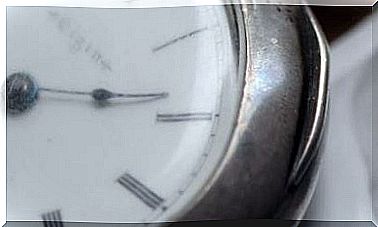Keys To Assimilate Iron Well And Prevent Anemia
We need iron for oxygen to reach the cells, but we don’t always take in enough or absorb it well. Avoiding deficiencies is basic. Do you lack iron?

Iron is an indispensable mineral. One of its great functions is to make hemoglobin, the protein in red blood cells that carries oxygen to tissues.
Iron is essential for cell oxygenation, cognitive function, effective immune system, and physical activity.
The absorption of iron depends on the hormone hepcidin, which the liver produces in greater or lesser amounts depending on the inflammation of the organism, whether there is a deficit of oxygen or the body’s reserves.
1. What are the consequences of iron deficiency?
The deficiency is common and can be due to an incorrect diet, heavy periods or a lack of absorption in the intestine.
One of the main consequences is anemia, that is, insufficient production of red blood cells.
The anemia due to iron deficiency (iron deficiency anemia) is the most common and just reducing the concentration of hemoglobin and oxygen transport capacity tissues.
The most common symptoms of anemia are tiredness, paleness, hair loss, cold, palpitations, headaches, lack of concentration or shortness of breath when exercising.
The cause is usually an insufficient intake of iron through food, but it must be taken into account that other nutrients, such as vitamin B12 and folic acid, are also necessary to produce red blood cells.
2. What are the daily needs for iron?
The recommended daily amount of iron depends on your age, gender, or whether you are pregnant.
During the fertile stage, women require 15 to 18 mg of iron per day.
Before and after, the needs are reduced and are equal to those of men: 8 mg daily.
The pregnant require 27-30 mg daily.
3. Can the body transform inorganic iron to organic?
Among the best plant sources of iron are legumes, spinach, pistachios, algae (especially spirulina), millet, or raspberries.
There is a protein in the intestinal villi that is capable of transforming non-heme iron into heme iron, but iron from plants (inorganic or “non-heme”) is absorbed worse in the intestine than that of animal origin (organic or “heme”). “).
4. How to improve iron absorption?
Although we have the capacity to transform non-heme iron to heme, we can improve its intestinal absorption by favoring a correct acidification of the pH of the stomach and combining foods rich in iron with others rich in vitamin C or with vinegar and fermented foods .
A good solution to make better use of vegetable iron is to combine legumes with sprouts.
To improve the assimilation of iron, it is also advisable to reduce inflammation in the body and rule out intestinal hyperpermeability, as it reduces the ability to assimilate nutrients.
5. What would a daily menu rich in iron look like?
- Breakfast: spinach, orange and hemp smoothie with spirulina flakes.
- Lunch: legume salad, sprouts, rice and red pepper with pistachio vinaigrette.
- Dinner: stir fry with quinoa, tofu, broccoli and dulse seaweed with cashew nuts and lemon tahini.
6. Can you have excess iron?
The excess of iron in the blood, hemochromatosis, is much less frequent but it also exists.
It is usually due to a genetic alteration that causes more iron to be absorbed or to other types of diseases.
The consequences can be serious, such as liver damage or diabetes.
7. Can chlorophyll help in anemia?
Chlorophyll in vegetables has a structure similar to hemoglobin (only it contains magnesium instead of iron).
Foods rich in chlorophyll (spinach, alfalfa or spirulina) stimulate the formation of red blood cells while alkalizing and detoxifying the body.
8. How does iron deficiency affect immunity?
Lymphocytes are the most affected by an iron deficiency, since this mineral is essential for the formation and maturation of this type of white blood cell.
These immune system cells allow the body to remember and recognize previous invaders, helping to destroy them.
9. What are the best iron supplements?
Iron supplements are common, but they often cause constipation or nausea.
To avoid this, one of the best solutions is to take it in the form of biscyginate: it improves absorption and has fewer side effects.
It is advisable for a doctor to monitor the treatment.
10. What parameters do you have to look at in a test to understand iron levels?
In addition to iron in the blood (sideremia):
- Entire blood count : hemoglobin, hematocrit, and white blood cells.
- The transferrin (carrier protein) and transferrin saturation index.
- The ferritin (protein – storing iron).









